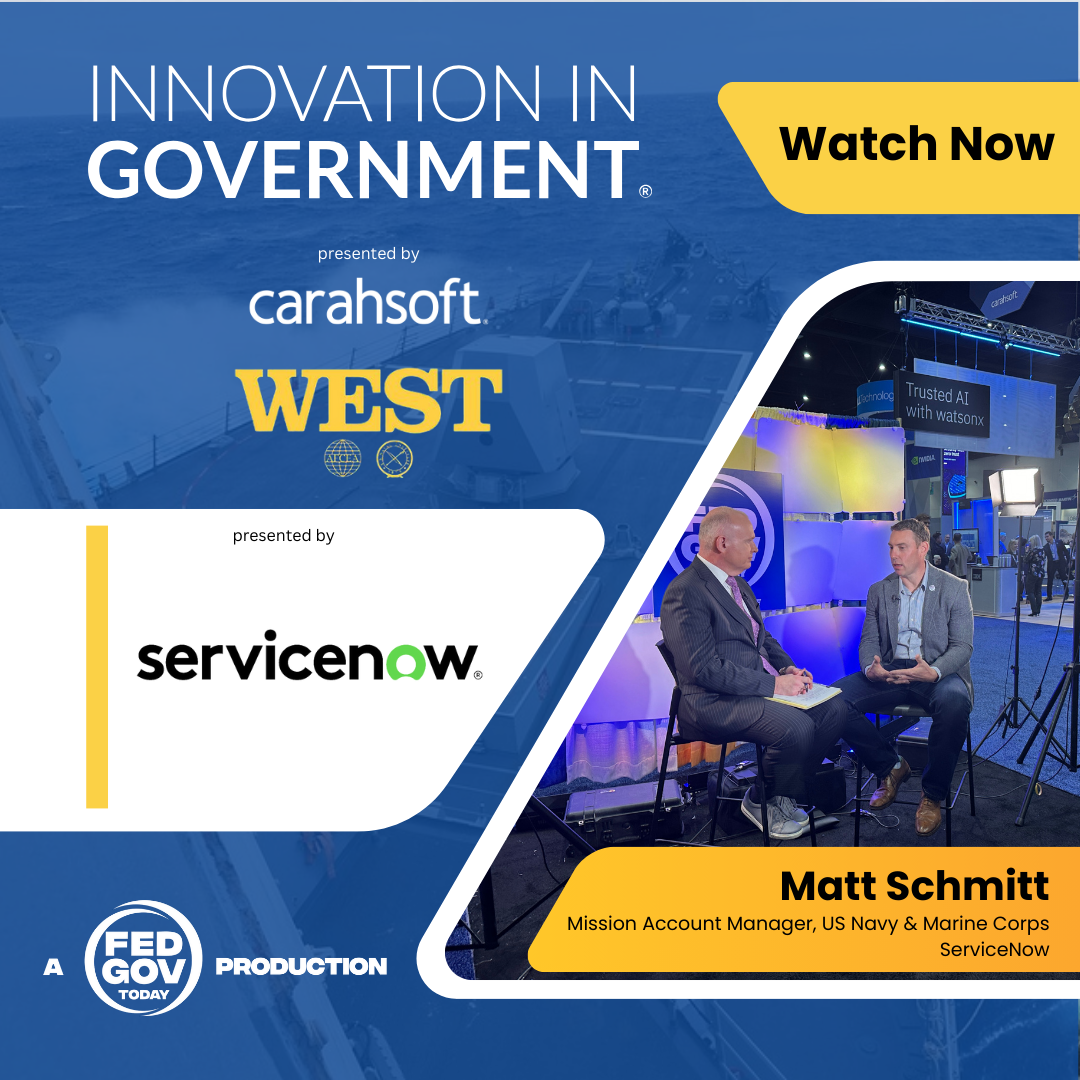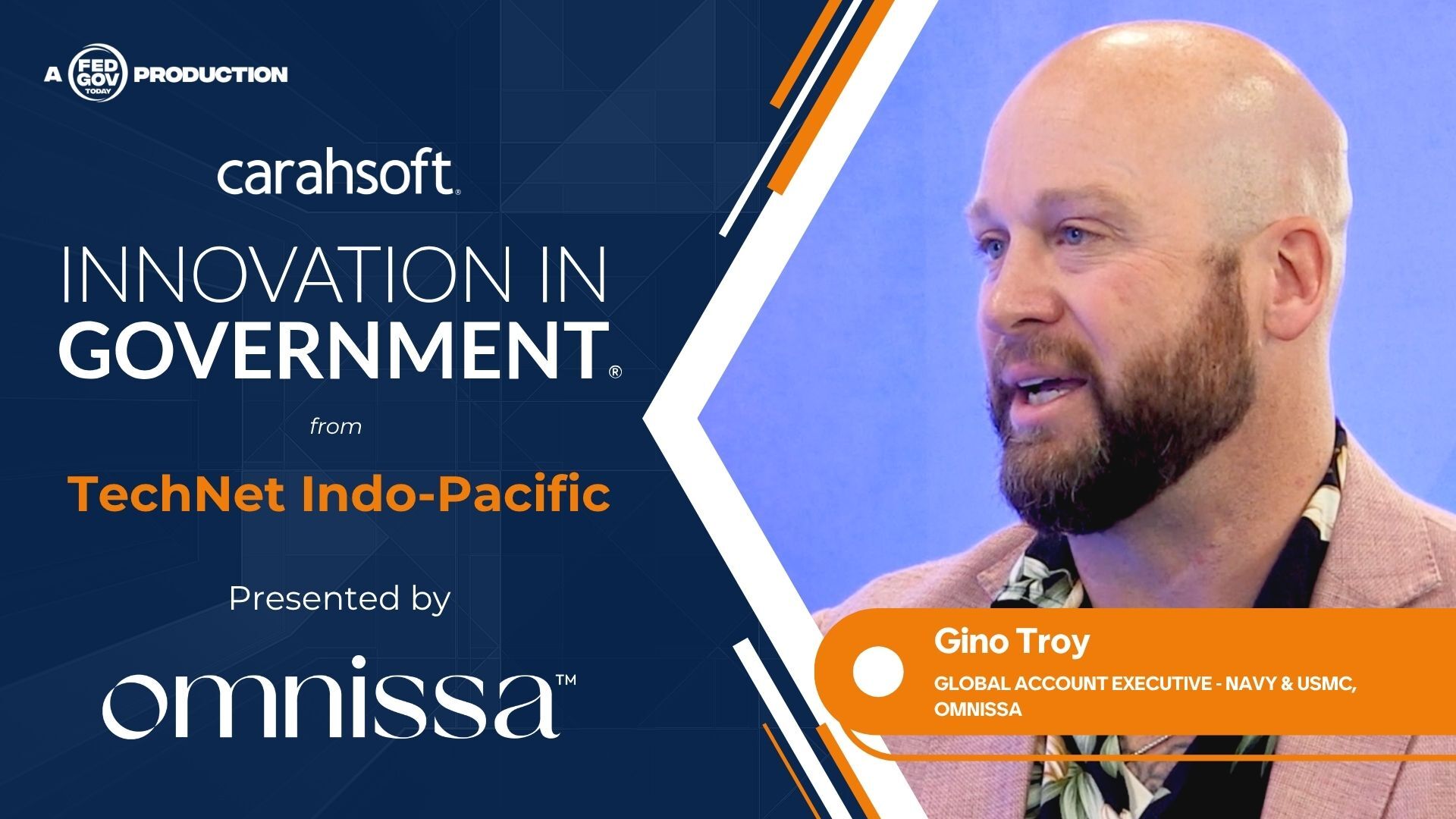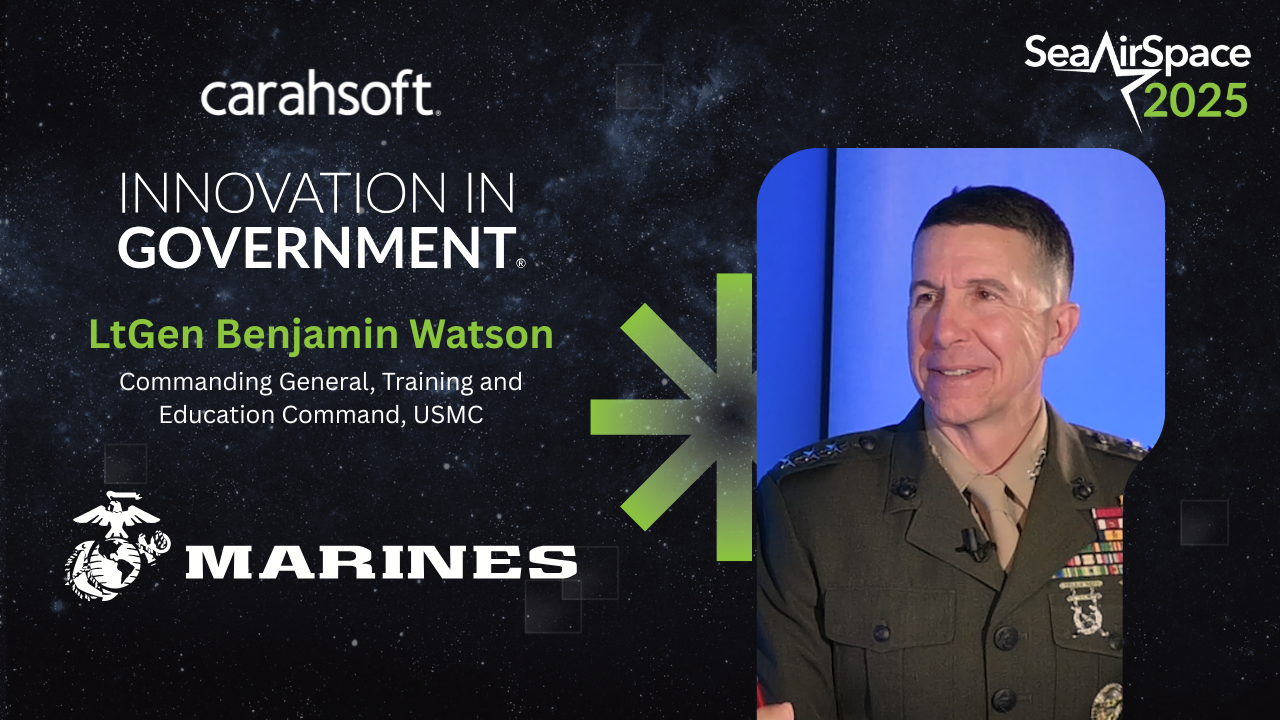Original broadcast 8/20/25
Presented by Carahsoft
Dave Raley, Digital Program Manager for Marine Corps Community Services, is passionate about solving two deeply entrenched problems in government technology: the slow, rigid pace of waterfall development and the burdensome, checklist-driven compliance processes that delay delivery. His solution, Operation Stormbreaker, is a bold reimagining of how the Marine Corps—and potentially the entire Department of Defense (DoD)—can develop, authorize, and deploy secure software at the speed of relevance.
Raley explains that the traditional model often led to bottlenecks, particularly in obtaining an Authority to Operate (ATO). In many cases, he says, the root cause wasn’t just slow approval; it was an overreliance on compliance as a box-checking exercise instead of a dynamic risk management process. This approach not only slowed delivery but also failed to adapt to evolving threats.
 Operation Stormbreaker changes that equation. At its core is an AWS Impact Level 4 cloud landing zone—the first cloud-native access point in a Marine Corps environment—already authorized by the Marine Corps and built with advanced zero trust security principles. Within this landing zone, Raley’s team established a Software Factory capable of delivering containerized workloads into production with full authorization in just 15 minutes.
Operation Stormbreaker changes that equation. At its core is an AWS Impact Level 4 cloud landing zone—the first cloud-native access point in a Marine Corps environment—already authorized by the Marine Corps and built with advanced zero trust security principles. Within this landing zone, Raley’s team established a Software Factory capable of delivering containerized workloads into production with full authorization in just 15 minutes.
That kind of speed is a dramatic shift from the 12-to-18-month timelines common under legacy compliance processes. Raley sees it as essential for maintaining deterrence and winning potential conflicts. If mission owners can deploy secure, reliable, and authorized workloads in minutes, they can adapt far more quickly to changing operational needs.
Operation Stormbreaker isn’t just about technology—it’s a government-to-government service. Raley’s team can now extend the same platform and capabilities to other DoD mission owners. Instead of forcing each organization to build its own infrastructure, obtain separate authorizations, and navigate security and zero trust requirements independently, they can simply onboard to Stormbreaker’s end-to-end Platform-as-a-Service. This eliminates redundant effort and allows mission owners to focus on their specific capabilities and applications.
Raley envisions a future where every DoD mission owner has the option to deploy via a certified platform like Stormbreaker, whether working with a Federal Systems Integrator (FSI) or an internal development team. This approach, he says, is about delivering capabilities—not projects—faster, more securely, and with greater flexibility.
A major part of Raley’s strategy is addressing the cultural link between acquisition and waterfall development. In the traditional model, requirements are defined in painstaking detail—sometimes over the course of a year or more—before acquisition begins. Once a contract is awarded, the vendor often discovers that necessary infrastructure and authorizations aren’t in place, adding months or years before the solution is operational. By then, the technology may already be outdated, and agencies are reluctant to update or modify it because of the effort involved.
Stormbreaker flips that model by embracing agile methodology for both development and acquisition. Raley champions sprint-based contracting, where work is broken into two-week increments with clearly defined deliverables and acceptance criteria. Contractors are paid for each sprint’s agreed-upon output, and development can move in any direction the mission requires. This not only accelerates delivery but also builds flexibility into the contracting process, enabling teams to respond quickly to changing priorities.
In practice, this means Raley can initiate development on a workload without having to detail its exact specifications in a contract. His team collaborates with the developer during discovery, using the certified pipeline to begin delivering functionality quickly and iteratively. The focus shifts from rigid project completion to ongoing product evolution—an approach that aligns with how modern software is developed and maintained.
There’s another dimension to Stormbreaker that sets it apart: as part of Marine Corps Community Services, any revenue generated from providing technology services to other DoD organizations is reinvested into quality-of-life programs for Marines and their families. That creates a powerful feedback loop—advancing DoD mission capabilities while directly supporting the service members who depend on them.
Raley is candid about the scale of the cultural change required. Moving from waterfall to agile, from compliance checklists to real-time risk management, and from project-centric to product-centric thinking demands new habits and mindsets across the acquisition, development, and operational communities. But he also sees pockets of excellence emerging across the DoD, where teams are already proving that these approaches work.
By sharing Stormbreaker’s capabilities and lessons learned, Raley hopes to make these pockets more widespread. His dream is a DoD in which mission owners have access to secure, certified deployment options on demand—removing the infrastructure and compliance burden from their shoulders and enabling them to focus on delivering mission value.
Operation Stormbreaker is more than a technical achievement; it’s a model for how government can work differently. By combining cutting-edge cloud infrastructure, advanced security, agile contracting, and a service-oriented mindset, Raley’s team has shown that it’s possible to compress delivery timelines from years to minutes without sacrificing security or quality.
For the Marines and other mission owners who will benefit from these capabilities, that speed and flexibility can make the difference between meeting a mission need in time—or missing the window entirely. And for Raley, it’s proof that with the right vision, the right platform, and the right culture, even the most entrenched processes can be transformed.
Key Takeaways
-
Operation Stormbreaker delivers secure, authorized workloads in minutes instead of months.
-
Sprint-based contracting enables flexible, iterative development aligned with mission needs.
-
Revenue from technology services is reinvested into quality-of-life programs for Marines and their families.



